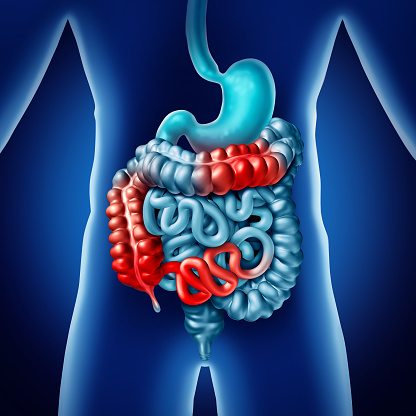A Crohn’s disease fistula is not an uncommon complication. There are several treatment options available to patients with the complication. The resulting fistula can either be minor or complex. The healing rate and setons for Crohn’s disease fistulas vary.
Symptoms
Crohn’s disease is a chronic inflammatory disorder that affects the entire thickness of the intestinal wall. As a result, parts of the intestine may scar or narrow, preventing proper digestion of food and liquids. In severe cases, surgery may be needed to widen the stricture or remove the diseased section. As a result, patients can experience pain, discomfort, diarrhea, and malabsorption.
A fistula is an abnormal opening that develops through the inflamed wall of the intestine. This may be caused by an abscess or ulcer. These lesions can leak acidic gastric fluids and grow larger until they become connected to other organs. If you experience one of these symptoms, visit a healthcare provider who can prescribe biologics or perform a surgical procedure to close the tunnel.
While a fistula is not necessarily painful, it can lead to serious consequences. The leakage can result in infections or incontinence, and it can even spread to the skin. In some cases, it can be accompanied by fever or anemia. Treatment depends on the type of fistula, but may include a combination of medication.
CD-associated fistulas look like a fissure that penetrates the gut wall. A thick layer of granulation tissue surrounds it, with the lumen filled with erythrocytes and nuclear debris. Some CD-associated fistulas are lined with epithelium, while others are covered with a thin layer of myofibroblasts.
Fistulas should be treated immediately. There are many medications and surgical procedures available to treat fistulas. If you suspect a fistula, it is important to schedule an appointment with your doctor as soon as possible. Your doctor can determine the cause of the fistula and prescribe the proper treatment.
Treatments
Despite the fact that a crohn’s disease fistula is an uncomfortable and often painful problem, there are a number of treatments for this condition. These include antibiotics, surgery, and ostomy bags. The best way to determine which treatment is right for you is to consult with your doctor.
First, it is important to determine the exact nature of the fistula. A diagnosis of Crohn’s disease fistula is crucial. Treatment options include ostomy surgery and drainage of abscesses. Depending on the type of fistula, the treatment will differ.
The pathogenesis of Crohn’s disease is unknown, but it involves an unidentified antigen in the mucosa. Among the mediators of the inflammation process are increased production of transforming growth factor-b (TGF-b) and Interleukin-6 (IL-6). The former triggers the differentiation of a Th17 cell, while the latter is responsible for maintaining the differentiation of Th17 cells. Other mediators of inflammation include tumor necrosis factor (TNF), IL-12, and IL-13. These trigger the production of matrix metalloproteinases and induce epithelial-to-mesenchymal transition.
The most accurate diagnosis of a crohn’s disease fistula is made with an examination under anesthesia. Imaging modalities such as pelvic MRI, endoanal ultrasound, and transcutaneous perineal ultrasound can help make an accurate diagnosis. These imaging modalities should be combined with an endoscopic examination. During the examination, the surgeon should assess whether the patient has active inflammation of the rectosigmoid colon or any internal openings. If there is no active inflammation, the fistula is considered closed and no longer needs treatment.
Anti-TNF-a agents are used as first-line therapy for perianal CD. These drugs must be used in combination with surgical therapy in order to be effective. These treatments can help close the fistula and may even reverse the progression of the disease. Topical treatment modalities are also being studied.
Healing rate
The healing rate of a crohn’s disease fistula varies greatly. Generally, the sooner the fistula is treated, the better the outcomes. However, some factors can make the healing rate slow, and in some patients, they may recur.
For instance, some patients may suffer from persistent urinary or fecal seepage. This could cause pain, infection, and even sleep disturbance. Many sufferers may also experience sexual dysfunction. Other risk factors are poor personal hygiene, a weak local immune system, or hereditary susceptibility to the disease.
Fistulas are caused by chronic inflammation in the gastrointestinal tract, usually between adjacent organs. Symptoms may include abdominal pain, fecal incontinence, or perianal fistula. Although a fistula is usually temporary, it can be a serious medical problem. Surgical removal of the fistula is one of the most common treatments for a crohn’s disease fistula.
In addition to surgery, patients can undergo various procedures to close the fistula. The most common of these is the endorectal advancement flap (EAF). This surgery mobilizes the mucosa, submucosa, and muscle fibers. A study published by Jones et al. reported a 58% clinical success rate using EAF in patients with CD. However, the study excluded patients with active proctitis. They also found that 7% of patients required a diverting stoma after surgery.
The study used 150 patients with FCD who had fistulas. The patients were randomized to receive either infliximab or a placebo. Infliximab was administered via intravenous infusion over a two-hour period. Approximately half of the infliximab patients had complete fistula healing compared to 14.1% of placebo patients.
Setons
Surgical treatment for a Crohn’s disease anorectal fistula usually involves three stages, including close examination of the fistula, drainage with a seton, and closure with a sphincter-sparing technique. The use of a seton is beneficial because it preserves permeability of the fistula tract and reduces the incidence of re-intervention due to new abscesses. The seton is inserted into the fistulous tract and passes through it and exits via the anal orifice.
The study included 200 patients with a fistula; 46 were diagnosed with CD. Of these, 59 underwent a fistulotomy. Of these, 29 underwent a proximal diverting colostomy. Twenty-seven patients had a transsphincteric fistula, while four had a perianal fistula. The average age was 42.6 years. Patients who underwent a fistulotomic procedure had a median age of 42.6 years, and were classified as intermediate to high-risk if they had a high-risk perianal tract. In most cases, a non-cutting seton is a good first choice for patients with fistulas, but the long-term success rate remains low, with less than
Patients undergoing a seton procedure were evaluated for overall cleaning problems on a scale of 0 to 10. The patient reported less pain after a procedure with a knotted seton, while patients with a knotless seton had less pain and irritation. Patients with complicated perianal disease underwent a surgical procedure using a knotless seton.
A study conducted in the Netherlands examined the feasibility of a knotless seton and its effects on the perianal disease activity of patients with a Crohn’s disease perianal fistula. The results showed that patients who received a knotless seton had reduced symptoms of perianal disease. The investigators also found that the procedure reduced pain, induration, and PDAI scores. Nevertheless, this result was not clinically meaningful in patients with undrained fistulas.



